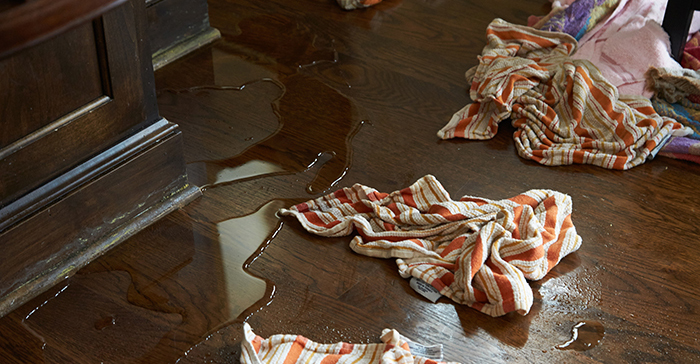Ways to Fix a Water-Damaged Wall in the Bathroom
Ways to Fix a Water-Damaged Wall in the Bathroom
Blog Article
What are your thoughts on How to Prevent Bathroom Water Damage?

The shower room is exceptionally susceptible for moist build-up as well as possible water damage because of the constant use water in it. This article offers easy assessment strategies to help identifying water damage risks.
The regular use water in the shower room makes it exceptionally at risk for wet buildup and potential water damage. By inspecting it routinely, you can minimize water associated damages.
The following set of inspections is easy to perform and should be done once in every three months in order to maintain your washroom healthy and to stop possible water damages caused by the bathtub, the shower, pipeline joints as well as plumbing, sinks, cupboards, and the commode
Do not disregard carrying out these inspections and be thorough while executing them. Bear in mind that these easy evaluations can conserve you a great deal of money by offering very early signs for water damage
Bathtub and Shower
The shower as well as tub require special attention and upkeep. Examine the floor tiles as well as replace if broken. Ensure that there is no missing grout between the tiles. Inspect and also change split caulking at joints where the walls meet the flooring or the tub. Blocked drains and pipelines problems will protect against the bath tub from drying out and may show severe problems beneath the bath tub. Seek advice from an expert instantly to stop architectural damage. Pay attention to stainings or soft areas around the bathtub wall surfaces as they might suggest an internal leakage.
Plumbing
Signs for water damages are hard to identify because most pipelines are installed inside the wall surfaces.
Pay special focus to floor covering and walls dampness as well as stains as they might suggest an unseen plumbing issue. Check dampness levels in adjacent spaces as well.
Sinks and also Cabinets
Sinks and also cabinets are revealed to wetness and moisture daily and also are typically overlooked. Examine regularly under the sink as well as on the countertop over it. Fix any drip in the trap as it might suggest drainpipe problems. Check out the sink, sluggish draining pipelines may show a blocked drainpipe. Replace sink seals if they are broken or loosened.
The Toilet
The bathroom is a vulnerable water joint. Check the water lines as well as look for leaks around the commode seat, in the hose, as well as under the water tank. If you discover any kind of signs of wetness on the flooring around the bathroom, look for leaks in the toilet rim and also tank seals.
Know that hanging commode bowl antiperspirants raises the possibilities for clogs.
How to Prevent Water Damage in Your Bathroom?
Water damage repair is an expensive, meticulous, and lengthy process. Unfortunately, bathrooms are the most susceptible rooms to water damage due to toilets, showers, and sinks. Pipes and fixtures wear out over time and are not immune to damage. But all is not lost, as there are ways to prevent water damage from occurring in your bathroom.
Check Your Plumbing
Nothing lasts forever, especially pipes, which can rust and begin leaking over time. You should periodically conduct pipe inspections and pay attention for any musty smells or water stains that may indicate you need water damage repair. Here are some things to check:
Frequently test valves for your toilet, shower, and sink to ensure they are properly working. Check faucet supply lines hidden under vanities and replace when needed. Replace cracked or deteriorating caulking along sinks, tubs, and showers. If you notice a clog in your sink, call in a professional. Since you can’t check the pipes in the wall, keep an eye out for stains, drywall bubbling, musty smells, and excess moisture; if the bathroom is on a second level, check the ceiling of the room directly below for these signs. Don’t Overwork Your Toilet
One of the most common reasons bathrooms need water damage repair is due to overflowing toilets. Save yourself the hassle of cleanup by being mindful and not pushing your toilet to extreme limits. If you have young children, it is especially important to keep an eye on them when they are in the bathroom and to teach them how to avoid clogging the toilet. Here are some more tips to help prevent your toilet from overflowing:
If you have a septic tank, only use septic-safe toilet paper Do not flush anything down the toilet besides toilet paper; items like diapers and sanitary napkins will clog the piping Pay attention to your toilet’s water level: If it’s low, it could mean it is partially clogged or that there is a crack in the toilet bowl Maintain Your Shower/Tub
Replace showers or tubs with cracks or other damage; even hairline cracks can allow water to seep in and cause damage. Grout and caulk help prevent water from seeping into walls and floors, so repair them if they are chipped, cracked, or deteriorating. Replace torn shower curtains or shower doors with seals that no longer work. Dry the floor and drain water from the tub immediately after use to prevent damage from sitting water. https://www.alure.com/home-improvements-blog/resources/how-to-prevent-water-damage-in-your-bathroom

Hopefully you liked our excerpt about Preventing Water Damage in the Bathroom. Thanks a ton for finding the time to read through our short article. You should take a moment to promote this article if you appreciated it. I treasure reading our article about How to Repair and Prevent Bathroom Water Damage.
Browse Our Site Report this page